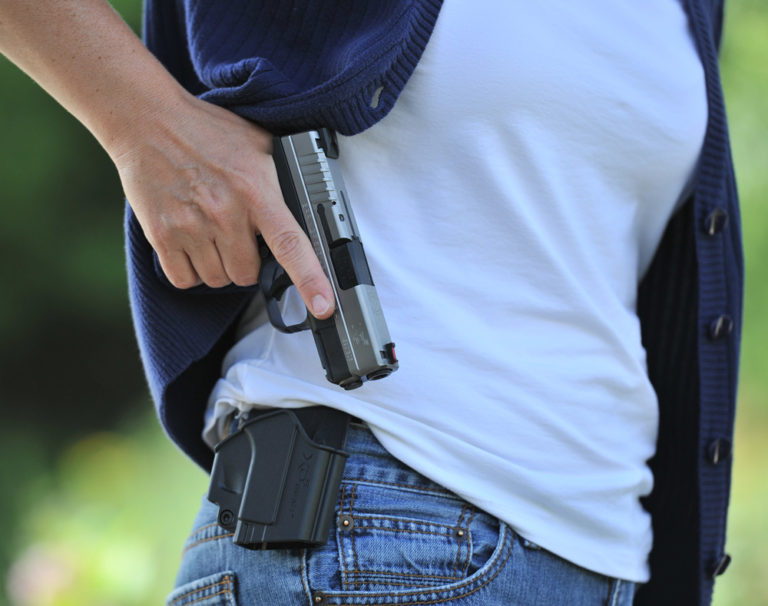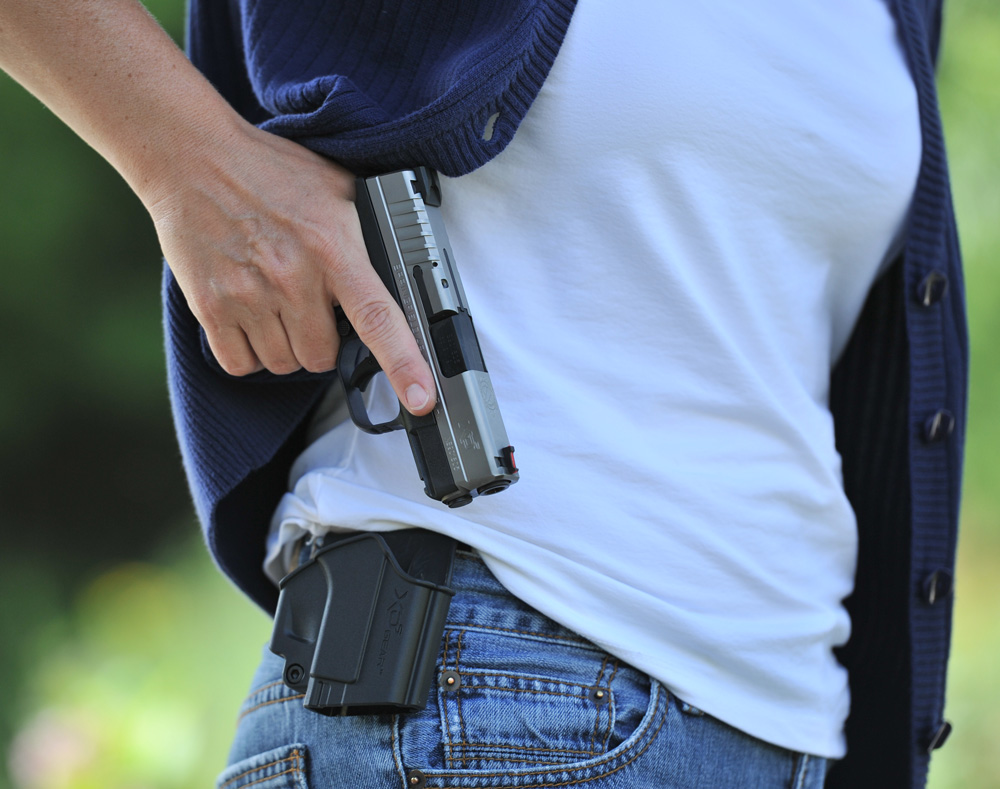

Reader Susan G. asks:
“I don’t know anybody who shoots and the more articles I read about buying a gun the more confused I get. Help!”
Susan you are not alone. Every day thousands of prudent Americans make a commitment to personal defense and decide to buy a gun. Here are three questions to ask yourself prior to going to the store that might help you narrow your search.
Am I going to get a license to carry concealed or is the gun just for home defense?
If you are going to get a permit to carry (good for you) then you need a handgun. If not, then a shotgun is a far better choice for home defense for most people.
Shotguns have a much more threatening image when displayed and can take a greater variety of ammunition, which allows you to regulate the power and avoid over-penetration through walls, which is a risk inside the home.
Am I going to regularly practice shooting with the gun I purchase? (Be honest.)
If you are committed to becoming a hobby shooter, then a more complex firearm is acceptable. Otherwise simplicity of operation should be at the top of your “features” list. That means a revolver rather than a semi-auto pistol and—this may surprise you—a double barrel shotgun rather than a pump.
I’ve spent lots of range time teaching young cops both types of handguns. Based on that experience, revolvers are simply more reliable than semi-autos. With a revolver, you point … you pull the trigger and it goes “bang.”
A semi-auto requires regular practice (at least 50 rounds, twice a year) to maintain proficiency. A revolver can be learned once and, if necessary, put away in a safe place (I always recommend practice, practice, practice, however).
Pump shotguns are great if you practice with them or have a background in wingshooting. However, while under stress new pump operators can “short shuck” the action and jam the gun. A double barrel 12 ga. with a flashlight taped to the business end is an awesome home defense weapon and is very easy to manipulate under pressure. (Note: These handy and reliable firearms are sometimes called “coach guns”).
Can I afford lots of ammo for this particular gun for practice and long term storage?
I recommend you add the cost of 1,000 rounds of ammo to whatever gun you buy. Practice is more important than gun type or caliber and the fear (real or imagined) of government restrictions can empty shelves of ammunition for your gun overnight.
If you are truly “living ready” then you need to have ammo put away—in a cool and dry location, properly stored ammunition will last for decades.
Please remember, this is not legal advice (you should know your laws) every person has different needs and capacities and every gunfight is different. When making tactical decisions, always get a second opinion.

Next Step: Get your FREE Printable Target Pack
Enhance your shooting precision with our 62 MOA Targets, perfect for rifles and handguns. Crafted in collaboration with Storm Tactical for accuracy and versatility.
Subscribe to the Gun Digest email newsletter and get your downloadable target pack sent straight to your inbox. Stay updated with the latest firearms info in the industry.

![Best Concealed Carry Guns In 2025 [Field Tested] Wilson Combat EDC X9S 1](https://gundigest.com/wp-content/uploads/Wilson-Combat-EDC-X9S-1-324x160.jpg)


![Best 9mm Carbine: Affordable PCCs [Tested] Ruger Carbine Shooting](https://gundigest.com/wp-content/uploads/Ruger-Carbine-Shooting-100x70.jpg)
![Best AR-15: Top Options Available Today [Field Tested] Harrington and Richardson PSA XM177E2 feature](https://gundigest.com/wp-content/uploads/Harrington-and-Richardson-PSA-XM177E2-feature-100x70.jpg)

What do you recommend regarding the weight/size of a carry piece. Is there a good option in the revolver category that is not too heavy for everyday carry?
A small semi auto pistol is slimmer, carries a higher cartridge capacity, can be reloaded much easier, and can be carried in the same configuration as a revolver (point, pull, bang). Do you really think a revolver makes a better every day carry gun than a semi auto?
Good advice.
I would add only one more question:
“Before buying a gun, whether for home defense or carrying, are you sure that you are ready to shoot someone without hesitation even though you will probably kill them? If you have not already decided that, you may hesitate and wind up with your gun being used against you.”
My father told me years ago, “Never carry a gun unless you are fully prepared to use it.”
Your father gave you good advice. The problem is that nobody (including cops) can ever be really sure what they will do under the terrible conditions of a lethal threat until they are actually faced with a specific situation. I teach my students that they need to be confident in their intention to use lethal force if no other alternative exists. Visualization is a very helpful technique in being mentally as well as physically prepared. You also make a good point about the risk of gun take-away. I wish CCW instructors spent more time on it.